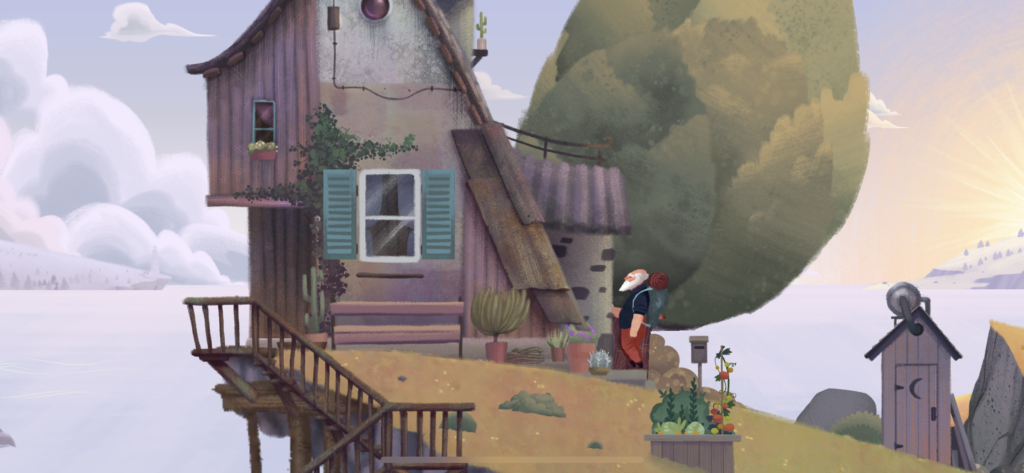Old Man’s Journey (developed by Broken Rules) is a gorgeous puzzle adventure game about a man who receives a letter that sends him on a journey across the countryside. As he wanders closer and closer to his destination, he reminisces about the past and the family he became estranged from. The gameplay involves an simple, yet innovative puzzle mechanic, in which the player changes the height of the hills and landscape in order to allow the old man to traverse through the stunningly created landscapes. And I mean it, the art is phenomenal. This was such a chill and lovely experience — albeit a short one at only an hour or two long.


I’ve enjoyed sudoku for years and began with physical books full of puzzles. However, I don’t always remember to or am able to have a physical book with me, so I have downloaded and deleted a few sudoku apps over the years. Out of all of them, Good Sudoku (developed by Zack Gage and Jack Schlesinger) is the best that I’ve ever used. The app not only provides a litany of puzzles, but also provides guidance and insights aimed at helping the player become a better sudoku player. I’ve found it rather helpful in learning how to suss out and solve particularly challenging puzzles.

Getting Over It with Bennett Foddy continues to be an ongoing struggle, but one I refuse to put aside. True, in the past month, I have managed to make it to the infamous orange — however, I have not manages to progress beyond that point and every time I fall off the mountain, it’s a frustrating slog getting back to the orange. I will, however, surpass this obstacle . . . eventually.

Books

Tracy Fullerton’s Game Design Workshop is an excellent read for anyone looking into understanding the full scope of the game design process. The book carries the reader through every step of the process, from ideation to prototyping, development and iteration, QA testing, and publishing. In addition, she provides Exercises at the end of most sections that provide the reader with an opportunity to further explore the concepts in a practical way, which also offers a means of building a portfolio of work as you follow along (a step that I skipped at this time, but intend to pursue down the road).
Another great aspect of the book is that it is peppered with personal perspectives and anecdotes from various game designers, producers, writers, and creatives who make games. They expand on some of the information that Fullerton provides and also share their journey into games, what inspires them, and how they approach problems during the development process. It’s a fantastic way to expand the scope of the discussion.
My copy was the 4th Edition, published in 2019, so some of Fullerton’s perspectives in regards to the status of the games industry (in Chapter 15) are a bit outdated, since the nature of the industry is constantly changing. So, I would imagine that a new edition could be due soon. However, the bulk of this book remains valid — as it provides valuable insights and perspectives on how to approach making games.
If you’d like to know about the rest of recent culture I consumed, including books, movies, and TV, you can check out my Culture Consumption for October.